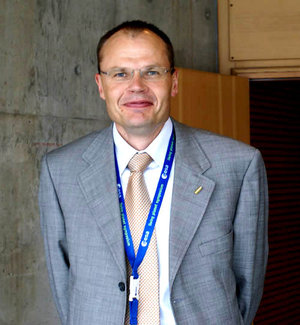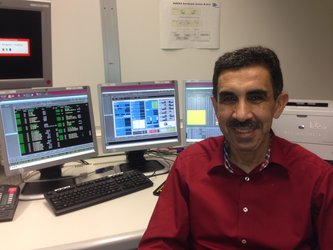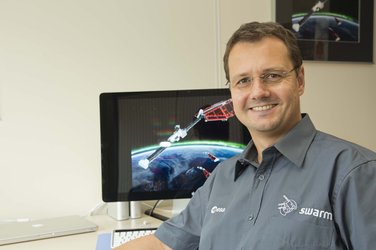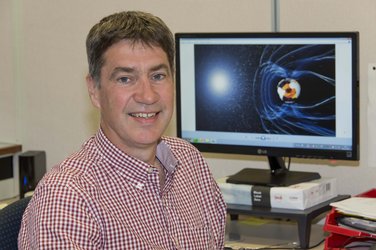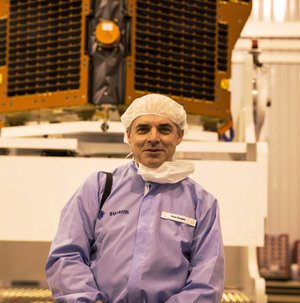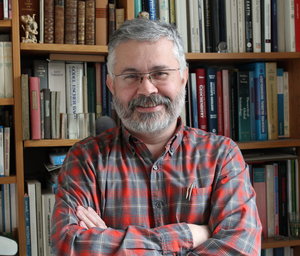Ralf Bock: System Engineer
ESA’s Ralf Bock has been involved in the design and development of Swarm since 2005. As the mission’s System Engineer, Ralf has overseen the definition and development of interfaces between the mission elements, ensuring that system requirements are well defined and implemented.

Ralf Bock, a German national, has been working for ESA's European Space Research and Technology Centre in the Netherlands since 2001. Prior to his role as the System Engineer for Swarm, which he took up in 2005, he worked as a Satellite and Launcher Procurement Engineer for the Soil Moisture and Ocean Salinity mission.
Graduating in 1995, Ralf studied Aerospace Engineering at the Technical University of Berlin, Germany. Before joining ESA, he worked as a Payload Interface Engineer for the CHAMP mission at GFZ Potsdam in Germany.
ESA: What role have you played in the development of Swarm?
Ralf Bock
System engineering is all about ensuring that the system interfaces and interactions are well defined and analysed so that the system requirements are met.
I have been involved in a wide variety of activities, but, in particular, I was in charge of defining how the satellites interface with the launcher and I was involved in defining how the satellite constellation orbits Earth. In addition, I contributed to developing the mission’s calibration programme and oversaw the development and calibration of the optical bench, which houses the vector magnetometer and startracker heads.
For the last two years I have been responsible for defining the commissioning phase, which follows the launch. This requires thorough planning and coordination of the activities that are necessary to verify the complete ‘system’ – including the satellites and instruments, the data processing part of the ground segment and the manoeuvring of the satellites into their separate orbits.
ESA: Does the fact that Swarm is a constellation throw up any particular challenges in terms of engineering?
Ralf Bock
The combination of having a constellation of three satellites and having to launch them all on a single rocket, indeed, presented us with some challenges. The size of the rocket fairing limits the dimensions of the satellites and hence the size of the solar panels, which are mounted on the body of the satellites. There were also implications for the boom that carries the magnetically sensitive instruments as it needs to be as long as possible. The boom is folded during the launch and deploys once the satellites are in orbit. In addition, the total mass of the three satellites had to be limited, although it is actually preferable for them to have a greater mass to reach a high ballistic coefficient.
I’d also like to mention the tailor-made launcher adapter and separation system because it has to release all three satellites simultaneously without risking a collision. Considering that the satellites are four meters long and packed like sardines on the launcher upper stage with just 8 cm separating them in places, the launch adapter developed by Khrunichev is a technological achievement. It includes a centralised release system and a mechanism that synchronises the four spring pushers that act on each of the satellites, thus minimising the rotational rates at separation – and therefore minimising the risk of collision.
All three satellites have been designed to be identical in form, fit and function. The duration and extent of the assembly, integration and testing phase was basically tripled compared to a single satellite mission.
Also, since Swarm will measure the magnetic field, each unit and eventually the complete satellite had to be magnetically characterised so that any magnetic signals coming from the satellites can be accounted for in the data.
ESA: Why are the magnetic instruments placed on the boom at the rear of the satellite?
Ralf Bock
Magnetic cleanliness is vital. If you want to measure the magnetic field accurately it is important to make sure that any electromagnetically ‘dirty’ unit on the satellite platform does not disturb the magnetically sensitive instruments.
The Absolute Scalar Magnetometer sensor is the most sensitive instrument and is therefore mounted at the very tip of the boom, as far away from the satellite body as possible. The optical bench, carrying the Vector Field Magnetometer and startracker heads is placed halfway along the boom where the disturbances from the platform units are minimal, but at the same time not too close to the Absolute Scalar Magnetometer to avoid any risk of disturbance between them.
The length of the boom is only one part of the story though – it was also of paramount importance to design a satellite with a high level of magnetic cleanliness. The prime contractor, Astrium GmbH, setup an extensive magnetic cleanliness programme, including the selection of materials, the design of the structure and units, the wiring on the solar panels and a campaign of magnetic characterisation and screening of virtually every box and screw prior to mounting it on the satellite.
Eventually, all this work paid off. The final testing done at IAGB in Germany showed that the satellites are remarkably magnetically clean.
ESA: What happens after the launcher has put the three satellites in orbit?
Ralf Bock
During the three days following separation from the launcher, the flight operations team at the European Space Operations Centre, ESOC, with the support of industry, will bring the three satellites into a safe and stable ‘in-orbit configuration’. This includes the boom deployment, switching-on the startrackers and GPS receivers, enabling the onboard orbit propagator and entering the fine pointing mode.
Then, with the start of the commissioning activities we will successively switch-on the payload instruments and perform health-checks and functional verification.
Quite a number of calibration activities will need to be performed to confirm or improve the calibrations that were previously carried out on the ground. Some involve attitude manoeuvres, for example, flying sideways or flying backwards.
The measurements obtained during these calibrations and manoeuvres are essential for optimising the performance of the satellites and instruments.
Once we know everything is functioning as it should, we can start putting the satellites into their operational orbits. Having been released into orbit 490 km above Earth, their altitudes and inclinations will be changed. Two satellites will be lowered to 462 km and one will be raised to 530 km. This procedure has to be carried out particularly carefully for the lower pair. At the equator they will fly side-by-side separated by 1.4°, which is about 150 km, with one trailing the other by no more than 10 seconds.
The ‘Payload Data Ground Segment’ and the Level-1b operational processor will also be made fully operational during the commissioning phase.
ESA: The three satellites are in a very particular orbit that changes over the course of their life in orbit – why is this?
Ralf Bock
The selection of this orbit constellation and its evolution over time has to do with the diverse scientific research objectives. The signal of Earth’s magnetic field has many different sources, such as from the core, from magnetised rocks in the crust, electrical currents flowing in the ionosphere, magnetosphere and oceans, and currents inside Earth induced by external fields.
We can’t provide optimal data for all the different research topics at the same time, but the evolution of the orbits help get the best out of the mission. For example, during the beginning and the end of the mission, we will get information primarily about Earth’s crust. In particular, the closely-spaced lower pair of satellites flying side-by-side allow magnetic signals coming from the crust to be to accurately mapped.
The best conditions for other objectives such as the core field, long-term variations and induction studies are obtained in the middle part of the mission when the two orbital planes are separated by 30–90° in local time.
The different Swarm orbit parameters have been selected knowing that there are forces that act on a satellite, causing the orbit to change. Orbits are perturbed by the non-homogeneity of Earth’s gravitational forces, as has been much publicised through ESA’s GOCE mission.
Because of the differences in altitude and inclination, the lower pair of Swarm satellites are perturbed differently than the higher satellite, causing them to drift at a different rate. In the third year of operation, their orbital planes cross at an angle of 90°.
Another important orbit perturbation comes from atmospheric drag. The closer you get to Earth, the more dense its atmosphere is. This drag actually slows the satellites down causing a decay in altitude. While the satellite in the higher orbit is barely affected, this is a welcomed effect on the lower pair, which eventually causes them descend to 300 km. The lower the satellites are, the more sensitively they can measure small magnetic features in Earth’s crust.
ESA: What have been the most rewarding aspects of working on this mission?
Ralf Bock
The past eight years have been a fantastic experience. Being part of a team that sees a demanding and unusual satellite mission develop from the first days of conceptual design through to the final delivery of the satellites ready for launch has been very rewarding.
However, the most rewarding part for me will be once the commissioning phase is complete. We will then be able to show that the complete system – the space-segment and ground segment – fulfil the mission requirements and that it is ready for four years of routine operations.
Editor's note:
This is one in a series of interviews with a few of the key people that are involved in the Swam mission. Please check back as the list will be added to over the coming weeks.








